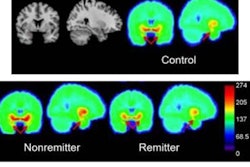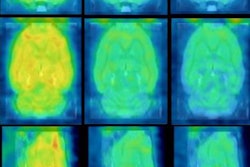A new PET tracer shows promise for detecting early-stage infections in people with implanted cardiac devices, according to a study published online April 18 in JACC Cardiovascular Imaging.
Bacteria take in maltodextrins through a specific transporter, wrote a team led by Dr. Kiyoko Takemiya, PhD. To explore the usefulness of related imaging agents for indentifying infections associated with implanted cardiac devices, the researchers developed and tested probes that included either a fluorescent dye (maltohexaose fluorescent dye probe, or MDP) or F-18 (F-18 fluoromaltohexaose).
The group implanted stainless steel mockups of medical devices subcutaneously in rats. Some of the rats were then injected with Staphylococcus aureus to produce an infection or another substance to produce inflammation; animals with a sterile implant were used as control subjects. The rats were then scanned, and additional PET imaging with F-18 FDG was also performed for comparison purposes.
The researchers found that PET imaging visualized significant accumulation of both F-18 FDG and F-18 fluoromaltohexaose in the infected rats. No such accumulation was seen in the control rats, according to the group. In the rats with inflammation, significant accumulation was observed with F-18 FDG but not F-18 fluoromaltohexaose.
"Our results indicate that maltohexaose-based imaging probes are potentially useful for the specific and sensitive diagnosis of infections associated with implantable cardiac devices," Takemiya and colleagues concluded.



















